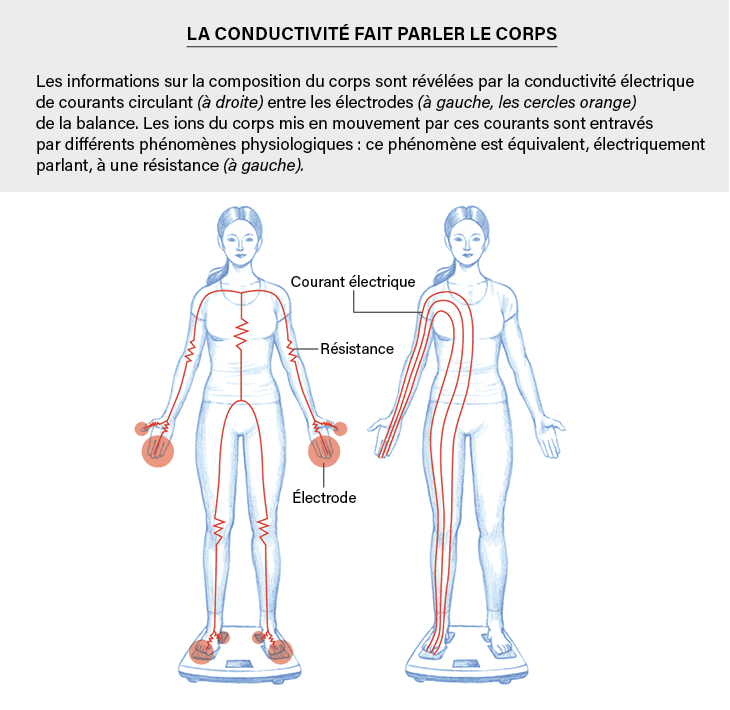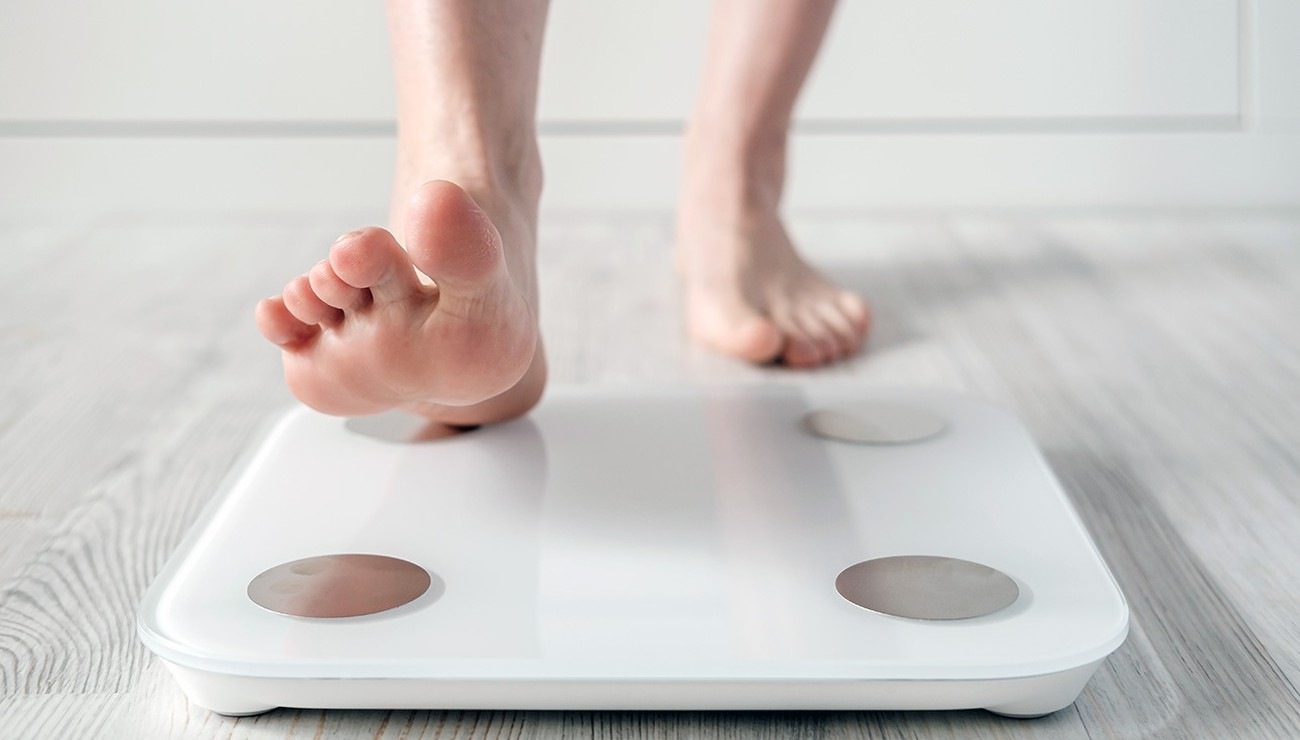Summer is approaching, and soon the holidays and the beach. A quick pass on the scale is essential to take all possible measures before putting on a swimsuit. To guide you in your good decisions, new connected electronic scales announce not only your weight, but also your body fat percentage. Faced with this promise, the physicist’s first reaction, even if preoccupied with his silhouette, is caution. Wouldn’t this still be an advertising message capable of attracting all those who struggle to find the line? Read the manual rest assured Caution: Operation of this scale requires bare feet and the soles of the feet are wet. Everything lights up! Information about body composition (fat, muscle, bone mass, etc.) is obtained by measuring electrical conductivity. What is the principle? Are they reliable?
complex driver
Inferring body composition from a simple electromyogram appears to be challenging because the conduction of electrical current in the human body is a complex phenomenon. The main reason is the heterogeneity of the tissues of which it is composed. Moreover, if we consider, for example, the elongated cells of muscle fibers, we quickly understand that the passage of current depends on the direction of the fibers with respect to the applied voltage. Finally, let’s add that the electrical properties of our body vary depending on our hydration state, the evolution of our digestion … However, a comparison of body composition reported by these metrics and measurements made by other, more sophisticated means, such as as an IRM, shows the robustness and relevance of the results. why ? Since these electrical measurements allow access to many quantities, as well as additional information on height, age, and gender, they are compared with measurements made on controls.
To understand, consider a simplified modeling of biological tissue. The conduction of electric current by a substance results from the movement of electric charges within the latter substance. In the case of biological tissues, several phenomena are involved. When an electric voltage is applied to a tissue, an electric field appears within it that moves the ions present in the cells as well as in the interstitial fluid that separates them. The resulting electric current is therefore more significant because the ion concentration is high.
There are two obstacles impeding the movement of these ions. First, the collision with the molecules of the physiological fluid in which they bathe. The result is that they almost instantly acquire a constant average velocity, proportional to the electric field they are exposed to, resulting in an electric current proportional to the applied voltage. This electrically corresponds to the behavior of the resistor.
Then, for intracellular ions, it is complicated by the presence of cell walls. These act as an insulating medium in which positive ions accumulate on one side and negative ions on the other. These separate charges create an electric field opposing the applied field. The movement of the ions slows down and equilibrium is reached. From an electrical point of view, we find a capacitor.
The cell as a whole, which combines the conduction inside it and the charged walls, thus behaves as a capacitor in series with the resistor.

This correlation defines a characteristic time: how long it takes the capacitor to charge when voltage is applied or to discharge when it becomes zero.
What are the consequences of connecting to an alternating voltage? If the current is almost constant or has a longer period of charging time, the dominant effect is that of the capacitor and the conductivity is zero or almost zero: we are dealing with a circuit breaker. On the contrary, with shorter periods, the effect of the capacitor becomes negligible in favor of the resistor.
Electrical modeling of the body
Now imagine more complex biological tissues consisting of cells (including fat cells) and interstitial fluid and assume that the ion content is the same in all fluids. By the weight of this canvas, we determine the total amount of the material. Since lipids conduct current very poorly, a measurement of low frequency or DC conductivity is sensitive only to the amount of interstitial fluid (circuit breakout cells) while high frequency conductivity refers to the total amount of fluid, both intercellular and intracellular. Finally, three measurements (weight and two conduction types) revealed three quantities: fat mass, non-adipose tissue mass, and intercellular water mass (associated with water retention).
What about the human body, which is more complex with bones in particular and the knowledge that in addition, from an electrical point of view, other phenomena are involved? For example, the electric field directs the polar water molecules of a physiological fluid, which has an electrical effect equivalent to that of a capacitor. In fact, the principle remains the same: a person’s weight is measured, then electrical conductivity in a range of frequencies in order to distinguish between the various physical effects mentioned above.

In the simplest scales, the conductivity between the feet is measured, which corresponds to the passage of current in the legs and in the abdomen. One can also find more advanced devices connected to the foot and grip. The measurements then provide separate information on the four limbs and the trunk.
In practice, the device is also told a person’s height, age, and gender in order to better estimate body composition. How do these results compare with those obtained through more complex physical methods? Electrical measurements give very good results for the average value of the measured quantities among the different individuals in the group. For one person, on the other hand, the obtained values are less accurate than those provided by complex measurements. However, it is still enough to assess the situation and decide what to do, for example, to lose weight. Does a person have enough muscle to have an adequate metabolism to burn fat? In total weight, what is the relative importance of fat compared to water retention? Or how are visceral fat and superficial fat distributed?
Above all, it is important to monitor these devices. Admittedly, the absolute values given for the different formulations are not exact due to the morphological properties of each, but these properties do not change. Thus, successive measurements on the same person are of particular importance. They then fully indicate whether the observed weight loss is due to muscle or fat loss. Or vice versa if the weight that is maintained is due to muscle gain associated with fat loss. You will have no more excuses! The beaches are yours…in Greece.

“Subtly charming problem solver. Extreme tv enthusiast. Web scholar. Evil beer expert. Music nerd. Food junkie.”

